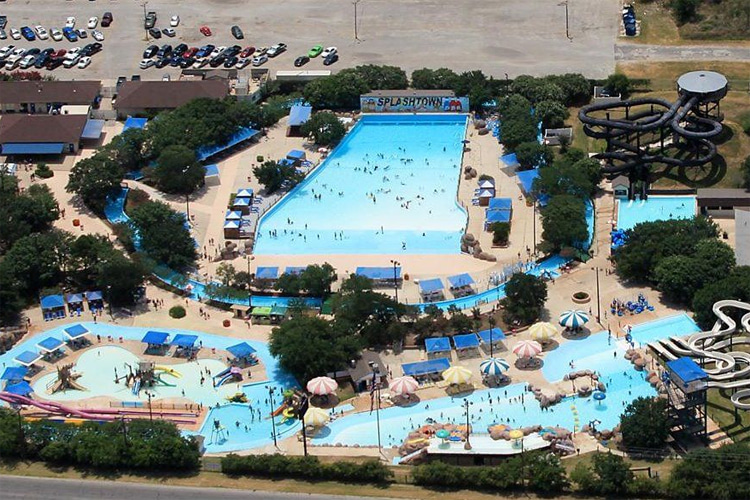
Texas has one of the most underrated surf culture scenes in the United States.
With its 367 miles (591 kilometers) of coastline facing the Gulf of Mexico, it does pick up some decent post-summer swells fueled by hurricanes.
South Padre Island, the capital of surfing in Texas, and Corpus Christi and Galveston are the main Texan surf hubs and points of interest.
The history of surfing in Texas dates back to the 1930s when an Italian-born lifeguard, Leroy Colombo, introduced the wave-riding practice in the state.
Forty years later, a tight surfing community was already taking on the wakes generated by tanker ships passing through the Galveston Bay. They love it as much as anyone in Hawaii and California.
Texas is also home to several surf stars, including Dorian “Doc” Paskowitz, Ken Bradshaw, and Debbie Beacham, the 1982 women’s world champion.
The first-ever FlowRider surf machine opened in Schlitterbahn Water Park in New Braunfels in 1991, too.
So, the Lone Star has always been a decent surf center with over a dozen surf shops and a very active Texas Surf Museum.
Let’s also not forget that Austin welcomed Wavegarden’s first North American wave pool and its second installation worldwide – NLand Surf Park.

The Discreet Texan Wave Pool
However, way before the internet era, there was a bold attempt to generate waves artificially and put pro surfers competing in it.
The Water Park USA, later renamed Splashtown SA, opened near I-35, northeast of San Antonio, in 1985.
It was the same year Wildwater Kingdom debuted in Allentown, Pennsylvania, and hosted an ASP World Tour-sanctioned event.
It seemed like wave pools were going to be part of the future of surfing, even before the smartphone and social media revolution.
Water Park USA occupied 20 acres. It featured, besides the surf basin, tube rides, a lazy river, 40 water slides, and a multi-activity pool.
The wave pool itself hosted half a million gallons of water and was able to generate 2.5-foot waves. It was not much, but it was rideable.
When the surf pool opened its doors to the public, there was one teenager dominating the East Coast surfing scene.
His name was Kelly Slater, a grom from Cocoa Beach, Florida.

Kelly Slater Surfed Wave Park USA at Age 14
Slater was making a name for himself in small waves, and the chance to show off at Water Park USA was an opportunity to gain confidence among the older and more experienced surfers before taking his game to the next level.
He was 14. The Floridian’s first travels were backed up by one of Kelly’s first sponsors, the iconic brand, Sundek.
“In 1986, [Kelly’s older brother] Sean and I got our own taste of stardom when Sundek sent us to do a surfing exhibition in a wave pool in Water Park USA near San Antonio,” the 11-time world champion reveals in his book “Pipe Dreams.”
“The waves, if you can call them that, were pitiful even by Cocoa Beach standards, maybe knee-high and barely breaking.”
“We couldn’t do much more than stand up and ride for a few feet before sinking.”
“Not many people in that part of Texas had ever seen someone ride a surfboard, so fortunately it wasn’t that hard to make an impression.”
“We were treated like surf stars.”
One year later, the facility hosted a competition featuring athletes from the Texas Surfing Association (TSA) and the National Scholastic Surfing Association (NSSA).
The August/September 1987 issue of Corpus Christi’s Surfabout newsletter reported from “a contest where the surf was very consistent.”
No pun intended, we guess. But there was more.
“As a matter of fact, every wave was the same, and the surfers never had to wait on a set.”
Will Church was crowned champion after beating Jimmy Curry in the final of the 24-man event.
Frequent old-time users report that the wave pool was around 10 feet deep near the wave-generation zone at the end, with the propeller coming above the water line.
A buzzer would be heard every time a new set of waves was about to be created. While surfers rode the ripples, spectators lined up on both sides of the pool watching the show.
36 Years of Long-lasting Memories
The original Water Park USA didn’t last long. In 1989, it was sold to a company named Wave Management.
Just two years later, Chrismari Inc. took over, with Keith D. Kinney serving as president and general manager.
In 2006, Kinney became the sole owner of the theme park already known as Splashtown SA.
Sadly, in 2021, Splashtown SA announced its closure, and the zone was changed to open way to a car dealership.
The Wild Wave Pool, as it was once called the surf basin, was the playground for many young Texans who probably got in contact and started surfing after witnessing surfers ride the chlorine water of this legendary theme park.
And, as with many American wave pools from this era, so was Water Park USA left abandoned.
Words by Luís MP | Founder of SurferToday.com


Leave a Reply